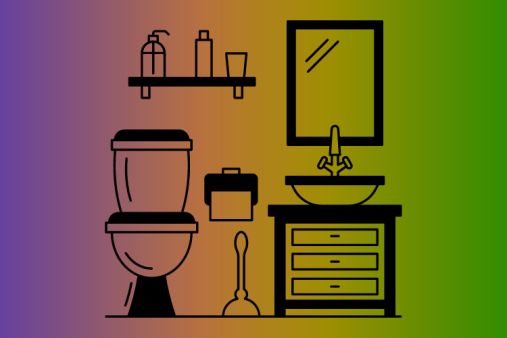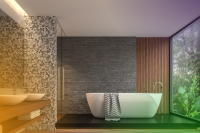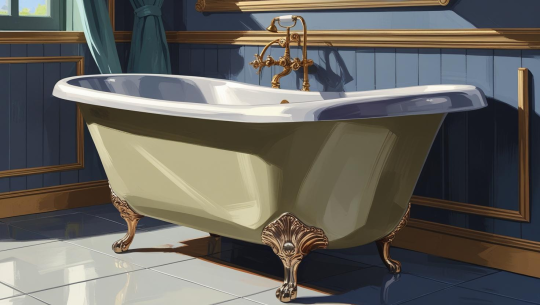Bathroom Renovation Tips: Your Essential UK Homeowner’s Guide
The bathroom, once merely a functional room, has evolved into a vital part of the modern UK home - a personal sanctuary, a spa-like retreat, and a significant contributor to property value. Whether you are seeking a full, structural renovation or a simple cosmetic uplift, navigating the process requires meticulous planning, a firm grip on the budget, and an awareness of contemporary trends.
This comprehensive guide, aimed at UK homeowners, provides the essential steps, modern ideas, and financial advice you need to successfully transform your bathroom.
1. Defining Your Vision: Renovation vs. Refurbishment
The first and most crucial step is determining the scope of your project. The difference between a refurbishment and a full renovation will dictate your budget, timeline, and the tradespeople you need to hire.
Refurbishment (The Cosmetic Update)
A refurbishment is ideal when the existing layout works well, the plumbing is sound, and you primarily want to update the aesthetics.
- Scope: Replacing fixtures (taps, shower screen), updating lighting, repainting, retiling, or replacing the vanity unit.
- Cost & Time: Typically lower cost (£1,500 – £4,000) and can often be completed in a few days to a week. Minimal disruption.
- Ideal for: Refreshing a tired but functional bathroom, or preparing a property for sale.
Full Renovation (The Structural Overhaul)
A full renovation involves stripping the room back to the bare walls and subfloor. This is necessary if you have underlying issues like leaks, poor ventilation, corroded pipework, or if the current layout is impractical.
- Scope: Changing the layout (e.g., moving the toilet or shower), upgrading electrics (Part P), rerouting plumbing, installing a wet room, or expanding the room’s footprint.
- Cost & Time: Significantly higher cost (typically starting from £6,000 and often exceeding £15,000 for a luxury finish) and can take two to six weeks or more. High disruption.
- Ideal for: Maximising a small space, creating a long-term luxury suite, or fixing structural/plumbing defects.
2. Planning for Modern Living: Trends and Functionality
UK homeowners are increasingly prioritizing wellness, sustainability, and smart technology. When planning, consider these key trends that add long-term value:
The Spa-Inspired Sanctuary
Modern bathrooms are retreats. Focus on elements that enhance relaxation:
- Walk-in Showers: Large, low- or no-threshold walk-in showers with frameless glass screens are highly coveted, offering a sense of space and excellent accessibility for future-proofing.
- Freestanding Baths: If space allows, a freestanding bath becomes a luxurious focal point.
- Underfloor Heating & Heated Towel Rails: These are no longer luxuries but expected comforts that eliminate damp towels and provide warmth on cold UK mornings.
Smart and Sustainable Design
Sustainability is key for 2025 and beyond, appealing to eco-conscious buyers and reducing running costs.
- Water-Saving Fixtures: Install dual-flush toilets (saving thousands of litres annually), aerated taps, and low-flow showerheads.
- LED Lighting: Use energy-efficient LED spotlights and integrated lighting (e.g., in smart mirrors or under floating vanities).
- Smart Technology: Consider digital showers that allow you to pre-set the temperature, or smart mirrors with anti-fogging technology, integrated lighting, and Bluetooth connectivity.
Space-Saving Solutions for Smaller UK Homes
Many UK homes have compact bathrooms or en-suites. Creative design is crucial:
- Wall-Hung Fixtures: Floating vanity units and wall-hung toilets free up floor space, giving the illusion of a larger room and making cleaning easier.
- Slimline Storage: Opt for reduced-depth vanity units and mirrored cabinets that integrate storage seamlessly.
- Quadrant/D-Shaped Shower Enclosures: These corner-fitting designs maximise the usable floor area, which is vital in tight spaces.
3. The Power of Upcycling and Recycling
A high-impact, low-cost approach is to incorporate upcycled or recycled materials, blending new pieces with rejuvenated old ones. This adds character and significantly boosts your sustainability credentials.
- Upcycle Existing Furniture: Don’t discard a perfectly good wooden chest of drawers. With the right waterproof paint and a basin cut-out, it can be transformed into a bespoke, striking vanity unit.
- Reclaimed Materials: Look for reclaimed tiles, vintage radiators (which can be stripped and repainted), or natural materials like reclaimed timber for shelving.
- Sustainable Surfacing: Investigate modern eco-friendly materials such as Terrazzo (often made from marble, quartz, or glass waste), or innovative surfaces like Ecorok, which is made from recycled waste glass.
- Sell or Donate: Use platforms like Gumtree or Freecycle to offer your old suite, copper pipework, or tiles to minimise landfill waste.
4. The Financial Strategy: Budgeting and Quoting
The average cost for a full UK bathroom renovation typically falls between £5,000 and £7,000, but this is highly variable. Your budget needs to cover three main components: fittings, materials, and labour.
Setting a Realistic Budget
Allocate funds with a contingency:
- Fixtures & Fittings (40%): Sanitaryware, taps, shower, bath.
- Materials (30%): Tiles, adhesive, grout, paint, flooring.
- Labour (30%): Plumber, tiler, electrician, and plasterer/fitter.
- Contingency (10-15%): Crucial for unexpected issues like rotten floorboards, hidden leaks, or electrical upgrades required once the room is stripped.
Sourcing and Comparing Quotes
Always get a minimum of three detailed quotes to compare.
- The Full-Service Quote: Bathroom showrooms (Wickes, Easy Bathrooms, etc.) often provide a single price for "supply and fit." This simplifies the process, offering in-house design and project management, and may include financing options like 0% APR or deferred payment plans.
- The Tradesperson-Led Quote: Hiring an independent fitter, plumber, or builder to manage the entire installation while you source the fittings. This can be cheaper but requires you to manage the schedule and separate material delivery.
What to Demand in a Quote:
- Itemised Breakdown: The quote must clearly separate the cost of labour (day rate/fixed price) from the cost of materials.
- Specific Work Included: Does it cover waste disposal? Is replastering included? Does it cover the electrician's certificate (Part P)?
- Timeline: A clear start and end date, along with milestones for payment.
Due Diligence: Vetting Your Tradesperson
Never compromise on professional qualifications:
- Plumbers: Should be qualified (e.g., City & Guilds).
- Electricians: Must be registered with a Competent Person Scheme, such as NICEIC or NAPIT, to legally self-certify electrical work (Part P of Building Regulations).
- References: Check online reviews and ask for references from recent local projects.
5. Navigating UK Building Regulations
Unlike painting and decorating, significant bathroom work (especially moving fixtures or installing a new bathroom) involves adherence to UK Building Regulations.
- Ventilation (Part F): Adequate ventilation is mandatory to prevent damp and mould. If your bathroom has no window, or you're installing a new bathroom, an extractor fan with a minimum extraction rate (typically 15 litres per second) is required.
- Electrics (Part P): Any new wiring, moving of sockets/switches, or installation of an extractor fan or underfloor heating must be completed by a qualified electrician and registered with your Local Authority Building Control (or self-certified via a Competent Person Scheme). Lights must be appropriately IP-rated for their specific zones (e.g., inside the shower/bath area).
- Drainage and Waste: Moving the toilet significantly from the soil stack can be complex and requires careful planning to ensure correct pipe gradients and to avoid siphonage. Always consult with your plumber before finalising a layout change.
6. The Final Countdown: Finishing Touches
The details are where a good renovation becomes a great one.
- Lighting Layers: Use more than one light source. Install recessed spotlights for general light, mirrored cabinets with task lighting for grooming, and LED plinth lights for soft, ambient mood lighting.
- Tiling Strategy: Large-format tiles (600x600mm or larger) reduce grout lines, creating a clean, seamless look that is easier to maintain and makes a small room feel bigger. Consider bold patterns or textured 3D tiles for a statement wall.
- Mirrors: A large mirror is the ultimate tool for visual expansion, reflecting light and space. A mirrored cabinet offers this benefit while hiding clutter.
By following this structured approach—defining the scope, embracing modern trends, valuing sustainability, securing detailed quotes, and respecting UK regulations—you will ensure your bathroom renovation is a smooth, value-adding, and ultimately satisfying experience.




